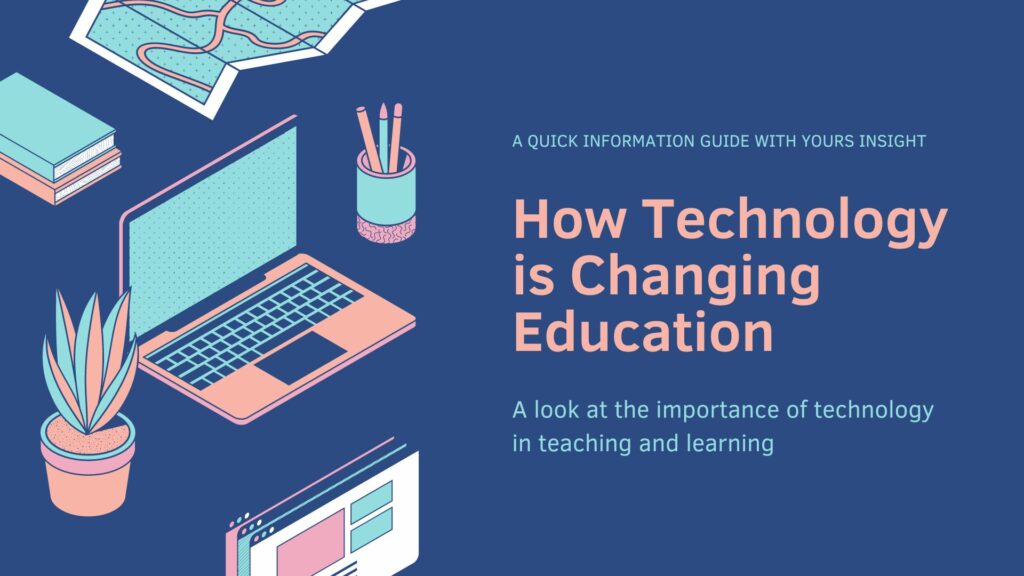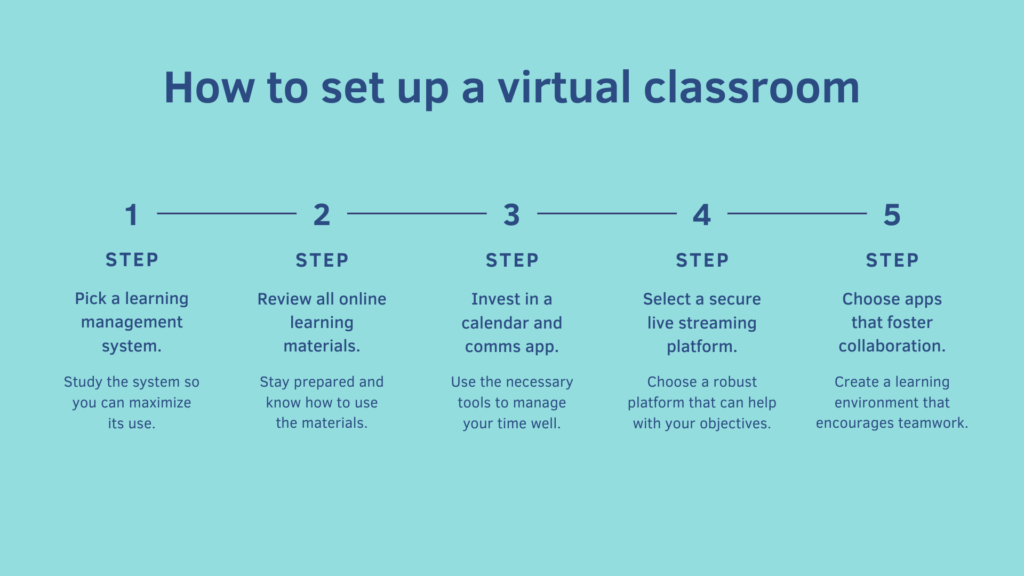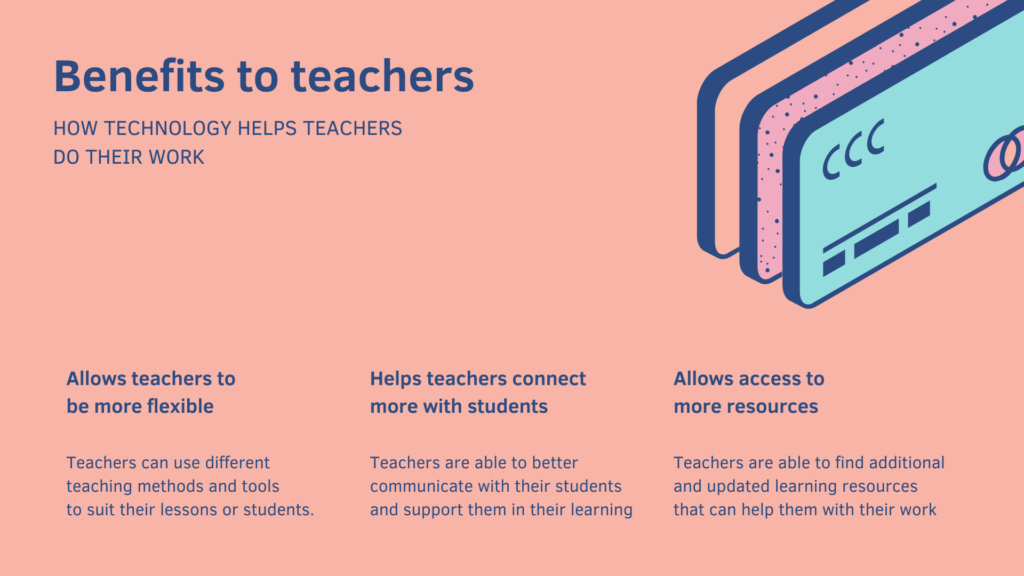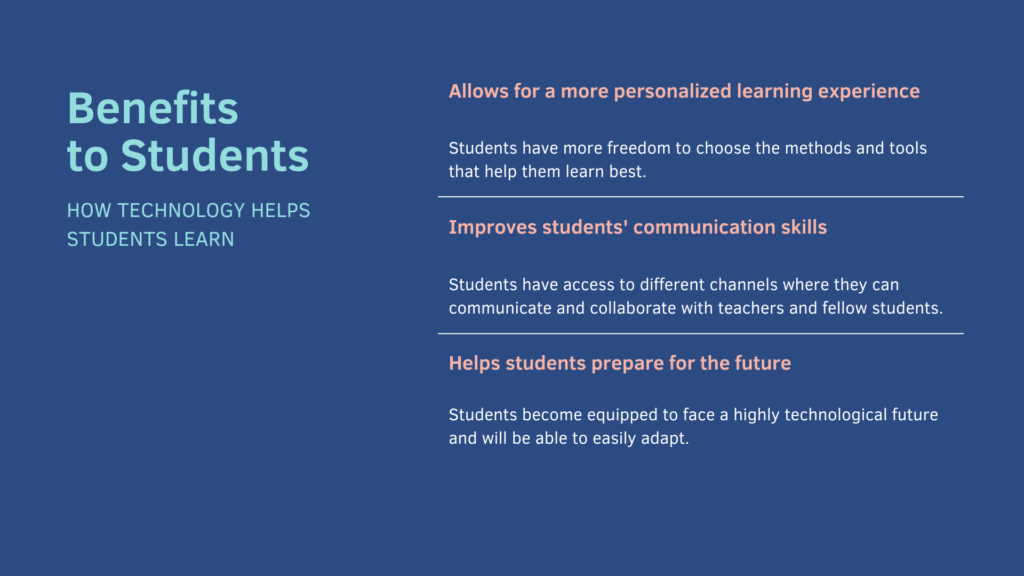Technology has changed almost every aspect of our lives, and education is no exception. The technology integration in education has made a huge difference in how teachers teach and how students learn.
As we move into 2024, many trends and predictions stand out as important in shaping the future of education. In this blog, we will explore these trends and predictions in plain English, making the topic accessible to all.
Table of Contents
1. Personalized Learning with TechnoTechnology integration in education
One of the most important trends in education technology is personalized learning. This approach tailors the educational experience to the needs, strengths, and interests of individual students.
With the help of artificial intelligence (AI) and machine learning, educational platforms can analyze student performance and customize content accordingly.
For example, if a student excels in math but struggles in reading, the platform can offer more challenging math problems to provide additional help with reading.
Individualized instruction helps ensure that no student is left behind and that everyone can learn at their own pace. It makes learning engaging and effective, while students remain motivated as the content is relevant.

2. Blended Learning
Blended learning that combines traditional classroom learning with online learning is becoming increasingly popular.
This hybrid approach offers the best of both worlds: the personal interaction and support from the physical classroom and the flexibility and resources of online education.
By 2024, we could see more schools and universities adopting blended learning models. This trend is driven by the need for flexibility, especially in a world where distance learning is becoming increasingly common due to the pandemic.
Blended learning offers students a more flexible schedule, while still benefiting from face-to-face interaction and collaboration with peers.
3. Gamification
Gamification involves incorporating game elements into the curriculum to make learning engaging and interesting.
This can include point systems, leaderboards, badges and communication challenges.
Gamification taps into students’ innate desire to compete and achieve, making learning fun and motivating.
By 2024, more educational institutions will be able to incorporate games into their curricula.
This trend is especially popular in elementary and middle schools, where getting students engaged can be a challenge. By turning lessons into games, teachers can engage students and make challenging topics accessible.
4. Virtual and Augmented Reality
Virtual reality (VR) and augmented reality (AR) are emerging technologies that could transform education. VR are immersive environments that allow students to explore and interact with the virtual world, while AR overlays the real world with digital information
For example, students can travel to historical sites, explore the human body in 3D, or conduct virtual science experiments. This technology provides hands-on experiences that can enhance understanding and information retention.
As technology becomes more affordable and accessible, we could see greater adoption of VR and AR in the classroom by 2024. These tools offer unique opportunities for experiential learning, making education interactive communicate and be participatory.

5. Artificial intelligence and machine learning
Artificial intelligence and machine learning are playing an important role in education. This technology can analyze large amounts of data to provide insights into student performance, predict outcomes, and tailor instructional content to individual needs
For example, AI can help identify students at risk of falling behind and provide targeted interventions. It can also automate administrative tasks, freeing teachers to focus more on instruction and student support.
By 2024, we could see continued growth in the application of AI and machine learning in education. This technology has the potential to improve educational outcomes by providing a more personalized and efficient learning experience.
6. Online Learning and MOOCs
The rise of online learning and Massive Open Online Courses (MOOCs) has democratized education, making it easier for everyone to access the internet. These platforms offer courses on a wide range of topics, usually for free or low cost.
In 2024, online courses and MOOCs are expected to continue to grow in popularity.
This trend is driven by the increasing demand for accessible and affordable education options. Online learning methods are also constantly evolving, offering more interactive and engaging content.

7. Collaborative Learning Tools
Communication is a key skill in today’s connected world, and technology makes it easier for students to collaborate.
Collaborative learning tools, such as online discussion boards, group projects, and video conferencing, facilitate communication and teamwork among students, even when they are not physically collaborating by technology integration in education.
By 2024, collaborative learning tools are expected to increase.
These tools not only help students develop important social and teamwork skills but also allow them to share ideas and perspectives, enriching the learning experience.
8. Digital literacy and coding skills
As technology integration in education continues to evolve, digital literacy and coding skills will become essential for students.
Schools are increasingly integrating these skills into their curricula to prepare students for the workforce of the future.
In 2024, we could see more emphasis on digital literacy learning and coding from our childhood.
These skills are not only important for technical jobs but are also valuable in a wide range of industries. By learning how to code and understand digital tools, students can become more adept at problem-solving, critical thinking, and creativity.

9. Data privacy and security
With the increasing use of technology integration in education, data privacy and security concerns are also on the rise.
Schools and education systems collect vast amounts of student information, and it is important to protect this information from unauthorized access and misuse
In 2024, we could see a greater focus on data privacy and security in education.
This includes implementing strong security measures, educating students and faculty about online safety, and ensuring compliance with data protection laws.
Conclusion
The technology integration in education is changing how we teach and learn. Trends and predictions for 2024 highlight the power of a personalized, convenient and enjoyable learning experience.
As we continue to embrace these technologies, it is important to ensure that they are used effectively and responsibly to enhance the learning of all students. The future of education is bright and technology will play a major role in shaping it.
Pingback: 5G and Education: Transforming Learning with CuttingEdge Connectivity - Yours Insight
I needed to thank you for this great read!! I definitely loved every little bit of it. I have you book-marked to look at new things you post…